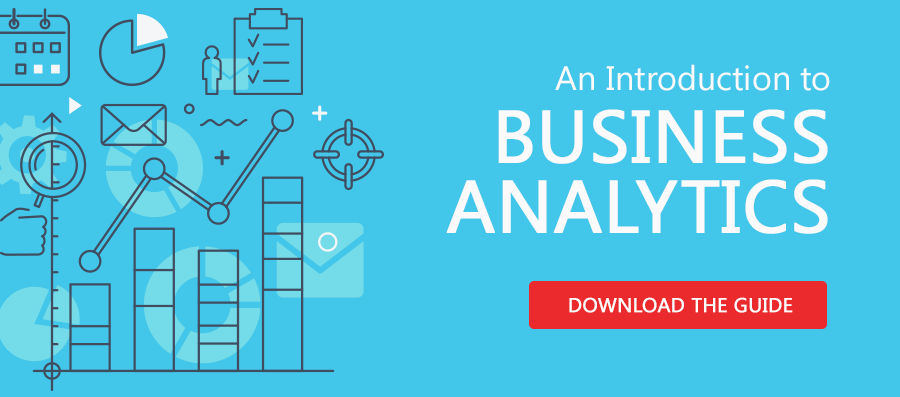Using this information, supply chain leaders can address supply chain challenges, reduce costs and at the same time improve service levels. Predictive analytics techniques allow organizations to identify patterns and trends hidden in their data to understand market trends, identify demand and establish appropriate pricing strategies.
What Is Predictive Analytics?
As its name implies, predictive analytics is about predicting future trends such as sales demand, exchange rates and other important supply chain metrics. The technique relies on the application of statistical modeling and regression analysis to historical data to determine and understand trends and formulate future trends.
These techniques aren't new, as they have been in use since the birth of computers. But what has changed is the capability of computers to analyze large amounts of data quickly together with advanced data mining techniques that made it possible to analyze structured and unstructured data.
Strictly speaking, predictive analytics doesn't predict the future, but rather use probability theories to determine what's likely to happen based on patterns and trends revealed by analyzing historical data. Apart from the increase in CPU processing ability, the other key factor making predictive analytics possible is the availability of data as a result of digitization and the widespread application of digital techniques.
Supply Chain Predictive Analytics Modeling
The first step in supply chain predictive analytics is preparing a mathematical model that closely represents the trend you're trying to understand. This may mean testing numerous forecasting models to determine the one that most closely represents reality. Typically, this will entail testing the model with known historical data and refining it until it's capable of reliably forecasting the past. The next step is adding current data and using the model to forecast future trends. It's essential to understand that the model is simply applying probability theory to determine what's most likely to happen; the model can't see into the future. What's also important is to have lots of high-quality data, as this increases the probability of an accurate forecast.
The ability to visualize results easily is an important aspect of supply chain predictive analytics modeling. Models should have visual dashboards for presenting results as well as an ability to drill down to get more detailed information.
Growth in the Use of Supply Chain Predictive Analytics
Although starting from a low base, the 2020 MHI Annual Industry survey reported the number of supply chain managers using predictive analytics grew from 17% in 2017 to 30% in 2019. Additionally, 57% of companies not using predictive analytics plan to start doing so within the next five years. A significant percentage believe predictive analytics has the potential to transform the supply chain.
The biggest hurdles to overcome include understanding how the technology works, where it can be applied and a lack of technical skills. Despite this, CIO magazine expects the market to reach a total value of $10.95 billion in the next few years. As companies adopt predictive analytics, they will be able to fine-tune their supply chains and achieve efficiencies that were just not possible in the past. This will come about by creating predictive insights into the organization's data along with the ability to make decisions based on future trends rather than historical information.
How Are Supply Chain Managers Using Supply Chain Predictive Analytics?
Numerous examples exist of where supply chain professionals are winning with predictive analytics. These include demand forecasting, predictive pricing strategies, inventory management, logistics and predictive maintenance.
Demand forecasting
Understanding and forecasting demand accurately remains a key challenge for organizations. Demand is never linear and is affected by numerous variables, some of which are outside the organization's control. Predictive analytics allows organizations to improve demand forecasting through analyzing past and current trends, and together with market intelligence and economic forecasts, to forecast demand.
Predictive pricing strategies
Predictive pricing strategies can overcome the limitations of historical cost-plus pricing strategies or those that use a predetermined margin. Instead, by forecasting demand for the product, it's possible to adjust prices dynamically to what the market can bear, A good example of predictive pricing is the pricing strategy used by Uber and other ride-hailing companies, as well as those used by some airlines.
Inventory management
Predictive analytics allows organizations to determine optimal inventory levels to satisfy demand while minimizing stock. Using sophisticated models, predictive analytics allows supply chain managers to determine detailed inventory requirements by region, location and usage. In this way, safety stock levels can be reduced and inventory placed where required. This ability is particularly useful when organizations have multiple distribution points, as it helps supply chain managers determine whether stock should be held centrally or at regional facilities.
Shipping and logistics
Shipping and transport costs often account for a significant percentage of the final product price. Using predictive analytics, it's possible to determine optimal shipping frequency and quantity to meet demand while minimizing costs. Predictive-route-planning can determine the fastest routes taking into account traffic congestion, distance, weather and delivery points. Additionally, smart sensors can monitor fuel consumption, tire pressure, driving style and vehicle condition.
Supply chain predictive maintenance techniques
Predictive equipment monitoring can identify when servicing is necessary as well as provide an early warning of component failure. This information may be used to order parts when required, allowing organizations to reduce spare inventory holdings and avoid unplanned equipment outages. A good example is the use of the Airbus Skywise platform that predictively tracks aircraft from Delta Air Lines and monitors component condition. This allows the airline to anticipate aircraft maintenance and avoid unplanned downtime.
New Potential Use Cases for Supply Chain Predictive Analytics
This article has only brushed the surface when it comes to potential predictive analytics use cases. As organizations continue to digitize their operations, they create numerous opportunities for predictive analytics throughout the supply chain.
One notable use case will be the implementation of real-time measurement using IoT and RFID devices to monitor and track equipment and parts. This information will allow supply chain managers to track shipments in real-time and accurately predict delivery to customers. It will also facilitate last-minute changes to accommodate additional needs without the usual disruption caused by these events.
Supply Chain Predictive Analytics Pays Off
If there's anything that separates organizations, it's their ability to forecast requirements accurately. Whether it's simply the next day's sales or something more complex, such as the long-term life product cycle, those organizations using predictive analytics have a head start.
The list of major companies using predictive analytics includes Google, Netflix and Amazon.
Research conducted by Gartner shows that companies embracing predictive supply chains achieve a high return on their investment. Additionally, they can cut inventory by between 20-30% thanks to more accurate demand predictions.
Predictive analytics can take a lot of the guesswork out of planning and decision support processes. Unlike historical analytics that only look into the past, supply chain predictive analytics allows supply chain leaders to anticipate and prepare for the future.









